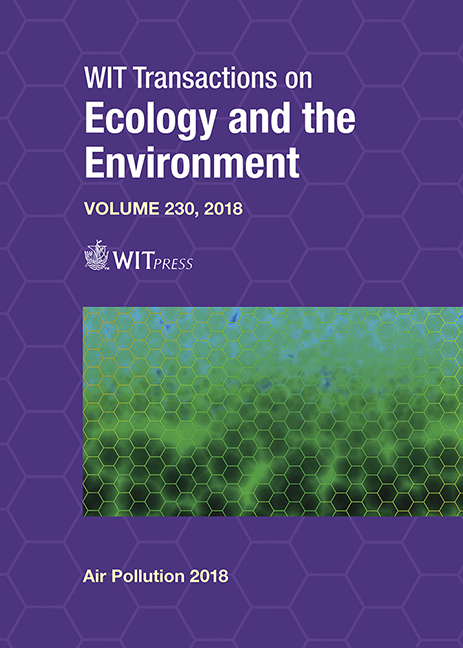INFLUENCE OF BOUNDARY LAYER SCHEMES IN MODELING THE DISPERSION AND SEDIMENTATION OF VOLCANIC ASH IN ECUADOR
Price
Free (open access)
Transaction
Volume
230
Pages
12
Page Range
83 - 94
Published
2018
Paper DOI
10.2495/AIR180081
Copyright
WIT Press
Author(s)
RENÉ PARRA
Abstract
Volcanic ash can cause critical air pollution events and other impacts. Atmospheric transport models are pivotal for modeling volcanic ash dispersion. The Planetary Boundary Layer (PBL) – the turbulent atmospheric bottom part which operates on scales that cannot be explicitly represented in models – strongly influences the dispersion of pollutants. We simulated the meteorology over Ecuador, using the Weather Research and Forecasting (WRF3.7.1) model with 7 PBL schemes: (1) Yonsei University (YSU); (2) Mellor-Yamada-Janjic (MYJ); (3) Hong and Pan (GFS); (5) Mellor-Yamada Nakanishi and Niino Level 2.5 (MYNN2.5); (6) Boulac PBL (BL); and (7) Shin-Hong (SH). After, the meteorological outputs were ingested into the FALL3DV7.1.4 model to simulate ash dispersion and sedimentation from 4 eruptions (Tungurahua volcano: 16 Dec. 2012, 14 Jul. 2013 and 1 Feb. 2014) (Cotopaxi volcano: 14 Aug. 2015) which took place in Ecuador in the last 6 years. Modeled ash clouds were qualitative compared with ash clouds detected by the Washington VAAC. Modeled ash fallout quantities were compared with records from ash meters located on stations around these volcanoes. For all the eruptions and all the PBL schemes, the modeled ash clouds were fairly consistent with the detected. The MYJ PBL scheme provided the best performance (R2 ≥ 0.5 for all the eruptions) in modeling ash fallout quantities. In other assessments, MYJ is among the PBL schemes that provided better performances when modeling the dispersion of air pollutants. These results suggest the MYJ PBL scheme could be a good choice both for volcanic ash and air quality modeling in the Andean region of Ecuador.
Keywords
PBL, local scheme, nonlocal scheme, Cotopaxi, Tungurahua





